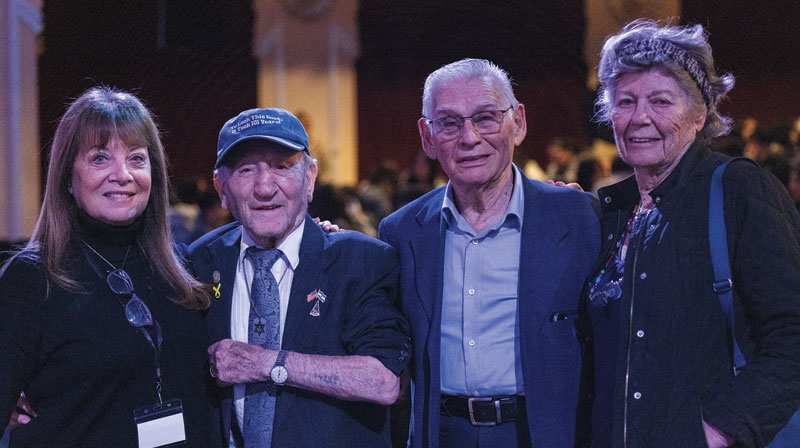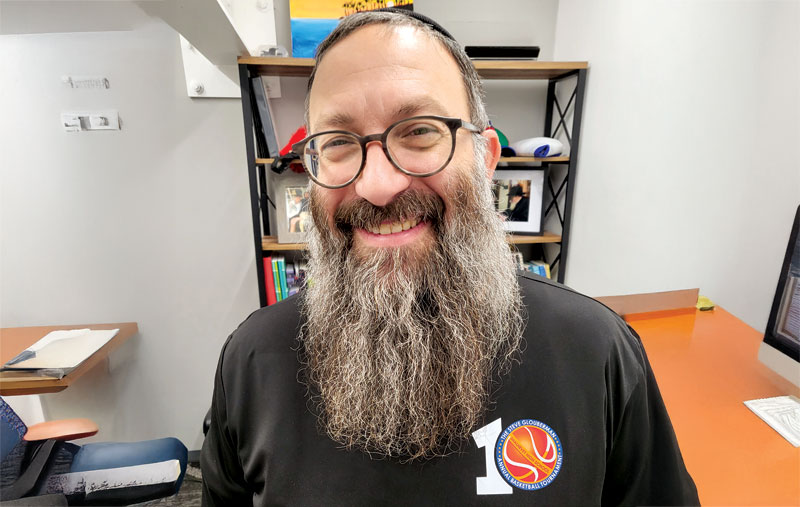Urban legend has it that a golem lived in the Weissensee Cemetery in Berlin during the Nazi era, protecting the Jewish landmark from destruction while Jews successfully hid among its tombstones. Now the golem has returned to Berlin, this time for more auspicious purposes — as part of a celebration and examination of this Jewish mythical creature, traditionally made out of inanimate matter and brought to life through mystical Hebrew incantations and rituals.
The legend of Weissensee forms one room of the expansive, multimedia “Golem” exhibition running through Jan. 29 at the Jewish Museum Berlin, and is among several thematic explorations of Judaism’s own action figure as it has crept into art, literature, film, pop culture and even video games. The philosophical question running throughout the exhibition is the one that gripped the rabbis who first experimented with its creation: What are the limits of man’s creative power?
Dominating the chamber exploring the golem’s Jewish origins is a life-size installation by Santa Monica artist Joshua Abarbanel. Looking like a gingerbread man (also a golem figure, according to Abarbanel), it lies on the ground, hands raised — either in impending life or looming death.
Abarbanel created the golem out of 6,129 carved wooden Hebrew letters, mem and tet, which together spell met (death). The 6,130th word (evoking the 613 mitzvot) is a large aleph that dangles from a chain on his neck, the key to the golem’s heart that will operate it, channeling it from met (death) into emet (truth). Abarbanel likens this aleph to the Arc Reactor set into the chest of the superhero Iron Man.
“For me, the golem is a universal question or theme for people about power and creation and those sorts of things which aren’t specifically Jewish, really,” Abarbanel told the Journal via Skype from his Santa Monica studio.

Growing up as a Reform Jew, he became fascinated with the Hebrew alphabet thanks to a book lying around the house that anthropomorphized each letter. Today, he is a lay leader at the Ohr HaTorah Synagogue in Mar Vista. This work was commissioned as a large-scale replication of the 18-inch version that appeared as part of the 2013 show “Sacred Words, Sacred Texts,” co-organized by the Jewish Artists Initiative of Southern California and shown at American Jewish University.
“It’s a story that as a folktale is set up to be a metaphor that we could apply to every age, in our own time and experience,” Abarbanel said. “It’s essentially the story of harnessing power with the intention of using it for good, but with the understanding that the power you’re putting into it is so great that you may not be able to control it.”
This idea is firmly expressed at the exhibition entrance with a display about an Israeli mainframe computer that renowned scholar of Jewish mysticism Gershom Scholem dubbed “Golem Aleph,” with the hope that computer technology would be used for good.
Just as artificial intelligence is a popular metaphor for the golem, so are political movements. In that vein, the exhibition displays one of the “Make America Great Again” caps made popular by United States President-elect Donald Trump. Canadian journalist Neil Macdonald is quoted as likening Trump’s campaign slogan to the letters animating the golem.
Other parts of the exhibition focus on the “Golem of Prague,” the classic myth in which Rabbi Judah Loew (the Maharal) was said to have created a golem to protect the Jewish ghetto, and German filmmaker Paul Wegener’s 1920 silent horror classic, “The Golem: How He Came Into the World,” in which Wegener plays the clumsy, robot-like golem.
The exhibition is the fulfillment of the personal ambition of professor Peter Schafer, who served as director of Princeton University’s program in Judaic studies before becoming director of the Jewish Museum in 2014. It grew out of his interdisciplinary golem course at Princeton, which achieved the sought-after distinction of the “cool course” sunglasses symbol in the college catalog.
“These courses gave rise not only to scholarship — such as an excellent study of the golem in German Romanticism — but also to poems, music and stories that carried on spinning the thread of the golem legend,” he said in the preface of the exhibition catalog.
Assistant Curator Anna-Carolin Augustin said the exhibition is a “phenomenal” success, having even introduced the word back into the German vernacular as a metaphor.
“In the German language, the word ‘golem’ wasn’t so popular, and now, since the exhibition opened, more German newspapers are using the term ‘golem,’ ” she said, speaking with the Journal at the museum.
During Abarbanel’s first visit to the German capital as part of the opening on Sept. 22, he became impressed with the many ways in which the German government and people address Nazi history and the fact that Berlin is one of the few European cities with a growing Jewish population.
“That said,” Abarbanel said, “it still feels good to create a work that has historic implications as a ‘protector’ of Jews and have it on display in Berlin.”























 More news and opinions than at a Shabbat dinner, right in your inbox.
More news and opinions than at a Shabbat dinner, right in your inbox.